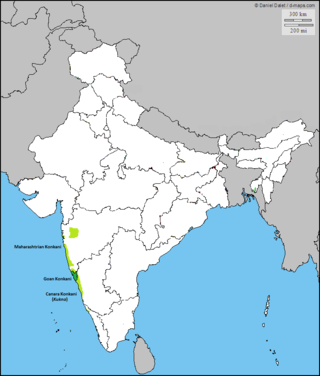
Konkani is an Indo-Aryan language spoken by the Konkani people, primarily in the Konkan region, along the western coast of India. It is one of the 22 scheduled languages mentioned in the Indian Constitution, and the official language of the Indian state of Goa. It is also spoken in Karnataka, Maharashtra, Kerala, Gujarat as well as Damaon, Diu & Silvassa.

The Goa Inquisition was an extension of the Portuguese Inquisition in Portuguese India. Its objective was to enforce Catholic Orthodoxy and allegiance to the Apostolic See of Rome (Pontifex). Conversions took place through the Goan Inquisition with the persecution of Hindus and the destruction of Hindu temples. The inquisition primarily focused on the New Christians accused of secretly practicing their former religions, and Old Christians accused of involvement in the Protestant Revolution of the 16th century. Also, among the offenders, were those suspected of committing sodomy, they were given the second most harsh punishments. The inquisition was established in 1560, briefly suppressed from 1774 to 1778, continued thereafter until it was finally abolished in 1812. Forced conversions led to crypto-Hinduism with those accused of it imprisoned and depending on the criminal charge, could even be sentenced to death if convicted. The Inquisitors also seized and burnt any books written in Sanskrit, Dutch, English, or Konkani, on the suspicions that they contained deviationist or Protestant material.
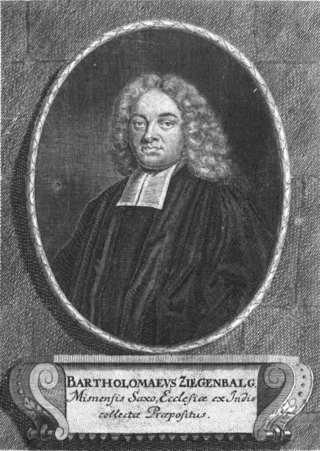
Bartholomäus Ziegenbalg was a member of the Lutheran clergy and the first Pietist missionary to India.
Goan Catholics are an ethno-religious community of Indian Christians adhering to the Latin Rite of the Catholic Church from the Goa state, in the southern part of the Konkan region along the west coast of India. They are Konkani people and speak the Konkani language.
This is a timeline of Goan history. It overlaps with the histories of other regions in South Asia, the Indian subcontinent, and colonial powers that influenced the region, including Portugal.
Thomas Stephens was an English Jesuit priest and missionary in Portuguese India, writer and linguist.
Goan Catholic literature is diverse.
Henrique Henriques (1520–1600) was a Portuguese Jesuit priest and missionary who spent most of his life in missionary activities in South India. After his initial years in Goa he moved to Tamil Nadu where he mastered Tamil and wrote several books including a dictionary. He is considered to be the first European Tamil scholar.
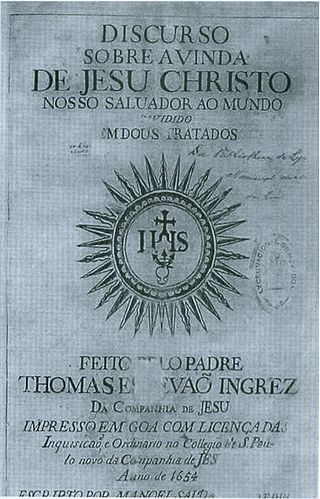
Krista Purana is an epic poem on the life of Jesus Christ written in a mix of Marathi and Konkani by Thomas Stephens (1549–1619). Adopting the literary form of the Hindu puranas, it retells the entire story of mankind from the creation days to the time of Jesus, in lyrical verse form. The Christian Puranas – 11,000 stanzas of 4 verses – were very popular in the churches of the area where they were sung on special occasions up to the 1930s. Although no copy of the original edition has yet been discovered, it is believed to have been first published at the College of Rachol in 1616, then re-published posthumously in 1649 and 1654.

Agnelo Gustavo Adolfo de Souza, was a Goan Roman Catholic priest of the Society of the Missionaries of St. Francis Xavier, Pilar who performed missionary work in the province of Goa, then part of Portuguese India. The cause for his canonization has been accepted for investigation by the Holy See, and has progressed to the point that he has been declared Venerable.
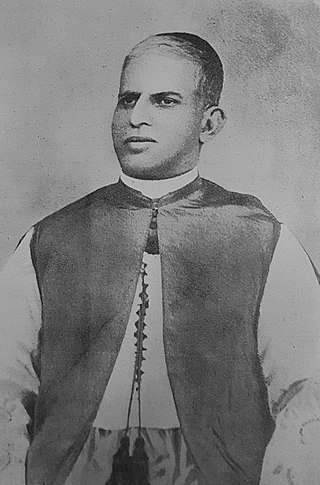
Msgr Sebastião Rodolfo Dalgado was a Catholic priest, academic, university professor, theologian, orientalist, and linguist from Portuguese Goa.

The Rachol Seminary, also known today as Patriarchal Seminary of Rachol, is the diocesan major seminary of the Primatial Catholic Archdiocese of Goa and Daman in Rachol, Goa, India.
Brother João de Bustamante or Juan de Bustamante, also known as 'the Indian Gutenberg', was a Spanish missionary who inaugurated the first era of print in India, specifically in the Portuguese colony of Goa.

The introduction and early development of printing in South India is attributed to missionary propaganda and the endeavours of the British East India Company. Among the pioneers in this arena, maximum attention is claimed by the Jesuit missionaries, followed by the Protestant Fathers and Hindu Pandits. Once the immigrants realized the importance of the local language, they began to disseminate their religious teachings through that medium, in effect ushering in the vernacular print culture in India. The first Tamil booklet was printed in 1554 in Lisbon - Cartilha em lingoa Tamul e Portugues in Romanized Tamil script by Vincente de Nazareth, Jorge Carvalho and Thoma da Cruz, all from the Paravar community of Tuticorin.

St. Paul's College was a Jesuit school, and later college, founded circa 1542 by saint Francis Xavier, at Old Goa. It was once the main Jesuit institution in the whole of Asia. It housed the first printing press in India, having published the first books in 1556. The original building, however, was abandoned progressively after the outbreak of plague in 1578, and went into disuse as the college moved to new building known as the New College of Saint Paul. It is an ASI protected Monument of National Importance in Goa.
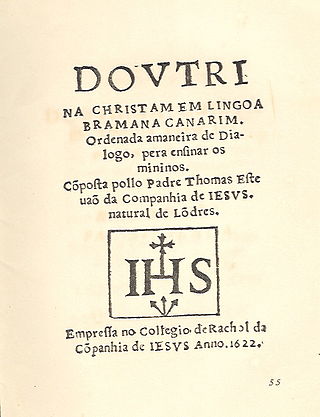
Konkani in the Roman script, commonly known as Roman Konkani or Romi Konknni refers to the writing of the Konkani language in the Roman script. While Konkani is written in five different scripts altogether, Roman Konkani is widely used. Roman Konkani is known to be the oldest preserved and protected literary tradition beginning from the 16th century AD.
The Konkani language agitations were a series of protests and demonstrations in India, concerning the uncertain future and the official status of the Konkani language. They were held by Goans in the then union territory of Goa, Daman and Diu under the Maharashtrawadi Gomantak Party. The protests involved citizen journalism, student activism and political demonstrations.
Mariano Jose Luis de Gonzaga Saldanha (1878–1975) of Uskai (Ucassaim) village in Goa, studied medicine and pharmacy, but went on to become a teacher of Marathi and Sanskrit at the Lyceum in Goa (1915–1929) and of Sanskrit and Konkani at Lisbon, at the University and at the Advanced School of Colonial Administration (1929–1946). In 1946-48 he was Deputy Director of the new institute of African and Oriental languages in Lisbon.
Étienne de la Croix SJ, was a French Jesuit, missionary to India and author of a life of St Peter in Marathi: Discurso sobre a vida do Apostolo Sam Pedro em que se refuta os principaes erros do gentilismo.

Konkani literature is literature in the Konkani language, mostly produced in three scripts: Roman, Devanagari and Kannada. Konkani literature is eligible for the Sahitya Akademi Award.









